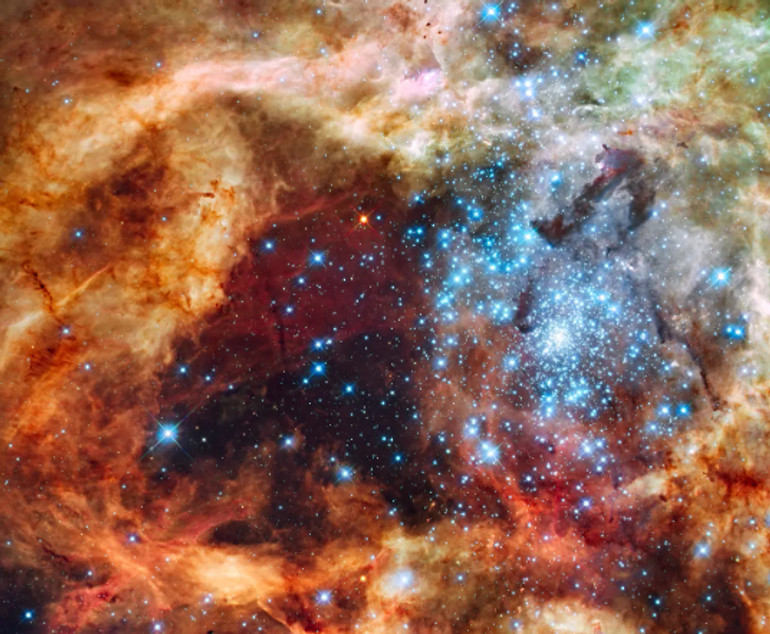For 3 years of operation, the Hubble telescope has examined almost 500 stars: why
[ad_1]
Why Hubble studied the stars for 3 years
NASA
Astronomers have been using the Hubble telescope for three years to collect information about stars that can only be seen in ultraviolet light.
Since ultraviolet light can only be observed from space, Hubble is the only active telescope that can perform this study. point out at NASA.
The large-scale ULLYSES (Ultraviolet Heritage Library of Young Stars as Core Standards) project was completed in December 2023. This research unravels the mystery of the formation, evolution and impact of stars
“It will affect general astrophysics, from exoplanets to the influence of massive stars on the evolution of galaxies and the understanding of the earliest stages of the development of the universe.”,” said Julia Roman-Duval, research director at the Space Telescope Science Institute (STScI) in Baltimore.

Blue stars photographed by Hubble
NASA
The team of scientists studied 220 stars and then combined these observations with information from the Hubble archive on 275 additional stars. This is how a whole library of data about stars emerged – their temperature, chemical composition and rotation around the Sun.
Scientists have also studied super-hot, massive blue stars that are a million times brighter than the Sun. They glow brightly in ultraviolet light, which Hubble can easily detect.
ULLYSES targeted blue stars in nearby galaxies that lack elements heavier than helium and hydrogen. This type of galaxy was common in the very early universe.
“The ULLYSES observations are a stepping stone to understanding those first stars and their winds in the universe, and how they influence the evolution of their young galaxy.”– added Roman-Duval.
The researchers also studied young stars less massive than our Sun. They emit a stream of high-energy radiation, including bursts of ultraviolet light and X-rays. As they are still growing, they collect material from the planet-forming disks of dust and gas.
Hubble analyzes how they gain mass, how much energy this process releases into the environment, etc.
Stormy ultraviolet light from young stars affects the evolution of these discs in the process of planet formation, as well as the chances of newborn planets being suitable for life. The target stars are located in nearby star-forming regions in our Milky Way galaxy.
“ULLYSES was originally conceived as an observational program using Hubble’s sensitive spectrographs. However, it has been greatly improved by coordinated and collaborative community observations with other ground-based and space-based observatories.
Such broad coverage allows astronomers to study the lives of stars in unprecedented detail and paint a more complete picture of the properties of these stars and how they affect the environment.”Roman-Duval said.
[ad_2]
Original Source Link











